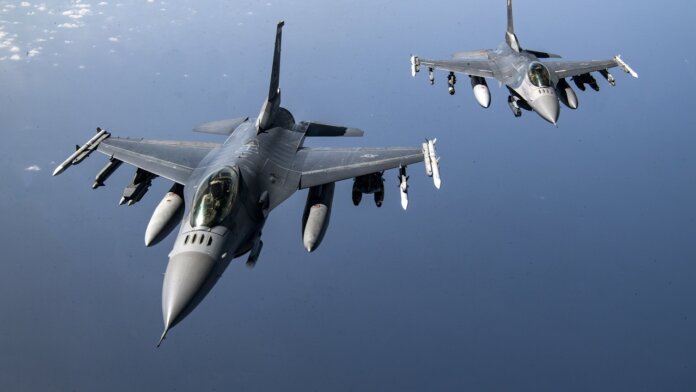Although fully-autonomous AI combat fighter pilots may be a long way off, that doesn’t seem to have deterred investors in what is arguably the first combat-ready AI pilot to come to market.
According to media reports, Shield AI has just been valued at $2.5 billion in its latest funding round. The San Diego-based defence technology startup formed in 2015, has been developing software to fly aircraft fully autonomously, even when disconnected from communications networks.
Advertising under the theme of “A Top Gun For Every Aircraft”, Shield AI’s Hivemind has already piloted an F-16 fighter jet, and defeated US Air Force and Navy fighter pilots in simulated dogfights with a 99 percent win-rate. The AI pilot has been developed for both military and commercial aircraft, including small unmanned aerial vehicles (UAVs).
The premise behind Hivemind is a simple one: AI in aviation must be trained to fly on its own, both beyond visual range and when digital communication with controllers is cut off. Moreover, there are specific needs that the military has, to use UAVs in situations where it is difficult or impossible to retain remote control.
Shield AI’s 29cm wide Nova 2 UAV uses Hivemind’s AI Level 5 autonomy, to navigate complex urban environments, subways, underground carparks and multi-storey complexes without communications, GPS positioning or a remote pilot. The UAV works alone or in teams, creating detailed maps of indoor structures, identifying adversaries and delivering a variety of payloads.
Hivemind is also used to pilot the V-BAT UAV, which Shield AI acquired via its buyout of Texan startup MartinUAV, or indeed to pilot whole teams of V-BATs. The V-BAT is designed for vertical take-off and landing in austere environments with no external support and can be assembled by two people and launched in under 20 minutes. Created for Forward Operating Bases, the V-BAT is a tactical asset able to increase domain awareness, penetrate integrated air defense systems, and carry a variety of payloads up to 25lbs (11kg).
However, Shield AI’s endgame is to create a high performance AI pilot that can fly fighter planes in combat. The company is currently positioning Hivemind as a digital co-pilot for a US Air Force F-16, able to augment combat decision-making for pilots. The software does this via edge-level AI that interfaces directly with onboard displays, flight controllers, sensors and radios.
The company plans to extend Hivemind’s capabilities to provide digital co-pilots for F-22s, F-18s and future next-generation aircraft. However, Shield AI’s product roadmap plans to continue to support legacy jet fighters, making them relevant for decades to come. That alone could be worth the money.
by Carrington Malin













